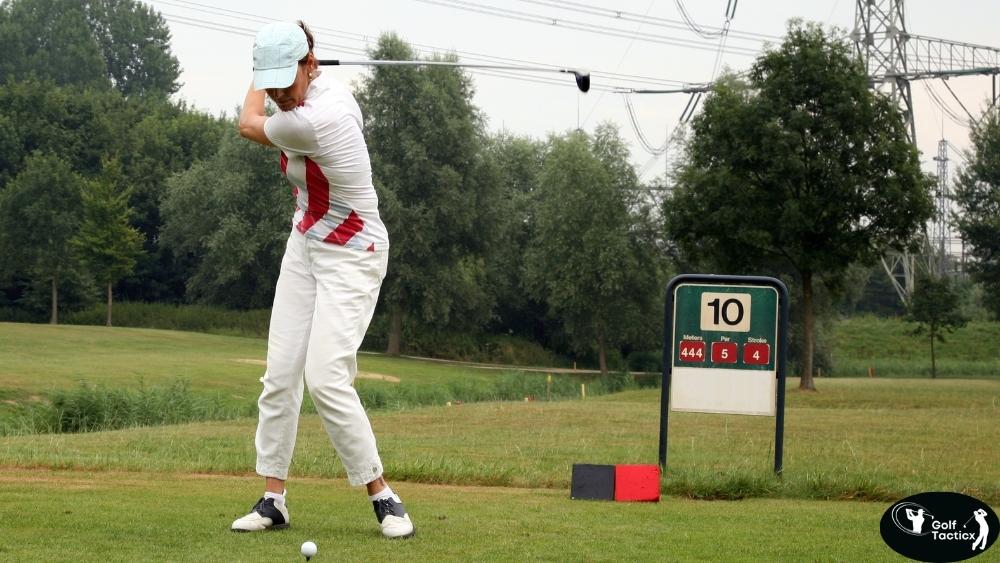In the previous post, we discussed How Do I Play Effectively in Strong Crosswinds and shared key tips to maintain control and accuracy despite challenging wind conditions.
When you’re out on the golf course, you’re bound to face all kinds of lies flat, uphill, downhill, or sidehill. While a flat lie might feel easy and familiar, uphill and downhill lies can add a whole new level of challenge. But don’t worry! With a few simple adjustments to your stance, club selection, and swing, you can tackle these lies with confidence.
In this post, we’re going to break down exactly How Do I Adjust My Game for Uphill and Downhill Lies, so you can still execute the shot you need, no matter what the terrain throws at you.
Understanding Uphill and Downhill Lies
Before we dive into the adjustments, let’s first understand what happens when your ball is sitting on an uphill or downhill lie:
Uphill Lie: This occurs when the ball is on an incline, higher than your feet. The slope makes it harder to hit the ball with a level swing and can cause the ball to fly higher than normal.
Downhill Lie: This happens when the ball is lower than your feet on a slope. It can make it harder to strike the ball cleanly and tends to cause the ball to fly lower and farther than expected.
Both of these lies require specific adjustments to your stance, swing, and equipment to maintain control and accuracy.
Adjusting for an Uphill Lie
When you’re faced with an uphill lie, the most important thing is to stay balanced. Here are the steps you need to take to make an effective shot:
Stance and Posture
Align Your Body: When you’re on an uphill lie, your body will want to lean toward the hill. You need to counter this by leaning slightly into the slope and adjusting your posture so you’re not overcompensating.
Bend at the Hips: To maintain a proper stance, focus on bending at your hips rather than your knees. This will keep your posture steady and help you get a clean strike.
Weight Distribution: Put more weight on your lower (front) leg to stay balanced. This will help you avoid falling backward during the swing and ensure that you make contact with the ball effectively.
Club Selection
More Loft: On an uphill lie, the angle of the slope will add loft to your shot, causing the ball to fly higher than normal. As a result, you may need to use a club with less loft to compensate. For example, if you’re facing an uphill lie with a 6-iron, consider using a 5-iron to avoid sending the ball too high.
Less Loft for Longer Shots: If you’re faced with a longer shot on an uphill lie, you might want to consider using a longer club, like a hybrid or 3-wood, to get enough distance while controlling the trajectory.
Swing Adjustments
Swing Path: On an uphill lie, you’ll want to take a more upright swing. This means avoiding a flatter swing plane and focusing on a steeper, more vertical swing. This will help you maintain control and avoid hitting the ground behind the ball.
Follow Through: Your follow-through should be more vertical as well. Make sure to finish high and extend your arms toward the target. This helps ensure that the ball gets enough height to clear any obstacles in your path.
Uphill Lie Tips
- Use a club with less loft to avoid hitting the ball too high.
- Adjust your stance so that your weight is forward on the front leg.
- Take a more upright swing path to avoid hitting the ground behind the ball.
- Focus on a higher follow-through for better control and distance.
Adjusting for a Downhill Lie
On a downhill lie, you’re working with a situation where the ball sits lower than your feet, and the slope will cause the ball to travel lower and farther. Here’s how you should adjust:
Stance and Posture
Lean Into the Slope: As with an uphill lie, you need to adjust your posture to stay balanced. For a downhill lie, lean slightly with the slope to maintain stability during your swing.
Keep Your Spine Straight: You don’t want to hunch over too much. Keep your spine straight and bend at the waist rather than the knees to stay balanced.
Weight Distribution: On a downhill lie, you want your weight to shift more toward your back leg (the leg furthest from the hill). This will help you avoid hitting the ball thin and keep your swing fluid.
Club Selection
Use More Loft: Because the ball is lower on a downhill lie, you might need more loft to get the ball airborne. A mid-iron or shorter club can help keep the ball under control and get it in the air.
Consider Adjusting the Club by a Half or Full Club: If the slope is steep, you may need to adjust by using a club with more loft. If the downhill lie is not too steep, using a regular club with the same loft might be enough.
Swing Adjustments
Flatten Your Swing Path: On a downhill lie, you want to flatten your swing slightly to accommodate the slope. This helps avoid the ball being hit too high or causing inconsistency in your shots.
Avoid Overhitting: Downhill lies can make the ball travel farther than you expect. Make sure to take a controlled swing, and avoid over-swinging to ensure more consistent results.
Downhill Lie Tips:
- Use more loft to keep the ball in the air.
- Adjust your stance so your weight is on the back leg (furthest from the hill).
- Focus on a slightly flatter swing path to compensate for the slope.
- Take a controlled swing to avoid overhitting the ball.
Common Mistakes to Avoid on Uphill and Downhill Lies
Here are a few common mistakes players make when dealing with uphill and downhill lies and how to avoid them:
| Mistake | How to Avoid It |
| Leaning Too Far Into or Away from the Slope | Always maintain a neutral balance, leaning into the slope just slightly to stay grounded. |
| Using the Wrong Club | Make sure to adjust your club choice to account for the loft and distance changes caused by the slope. Don’t use the same club you’d use on flat terrain without considering the lie. |
| Hitting Too Far or Too Short | Take extra care to adjust your swing for the different ball flights on these lies. Trust that the ball may travel a little further (downhill) or higher (uphill) than normal. |
| Swinging Too Hard | In both cases, don’t over-swing. Whether you’re on an uphill or downhill lie, focus on controlled, consistent swings to prevent mishits. |
Practice Drills to Improve Your Uphill and Downhill Lie Shots
The best way to get better at handling uphill and downhill lies is through practice. Here are a few drills to help you build confidence:
Uphill Lie Drill: Find a gentle uphill slope and practice hitting shots with various clubs. Focus on keeping your body aligned and your follow-through high. Experiment with different lofted clubs and observe how the ball flight changes.
Downhill Lie Drill: Find a gentle downhill slope and practice hitting shots with more lofted clubs. Focus on keeping your body posture straight and avoiding a steep swing. This drill helps you learn how the ball reacts to the slope and builds your confidence.
Conclusion
Handling uphill and downhill lies may seem tricky at first, but with the right adjustments, you can make accurate, confident shots. Remember to adjust your stance, club selection, and swing path to fit the slope you’re dealing with. Whether you’re playing on an uphill or downhill lie, the key is to stay balanced and make controlled swings.
With practice, these types of shots will become second nature. Keep experimenting, and before you know it, you’ll be handling slopes like a pro.
Next up: In the next blog post, we’ll explore the best strategies for playing in extreme heat or cold—two weather conditions that can really impact your game. Stay tuned!
















Leave a Reply